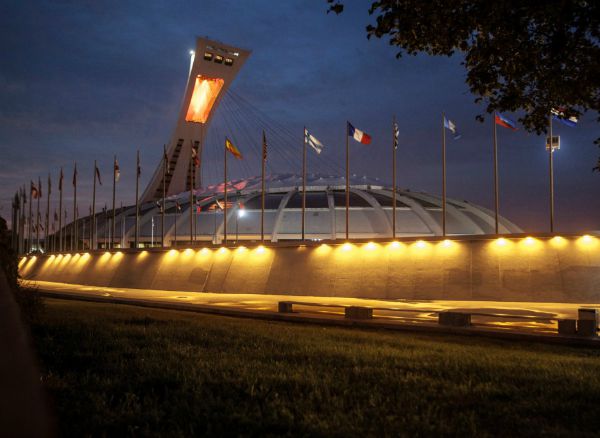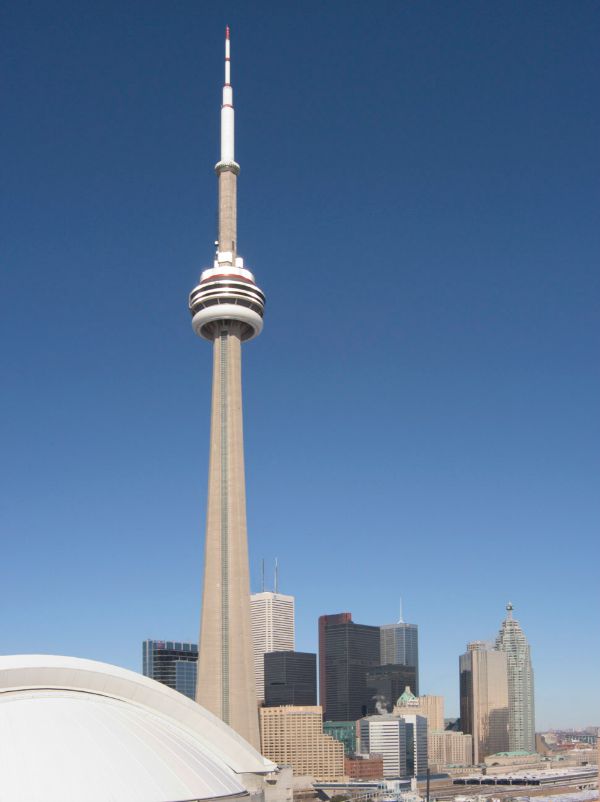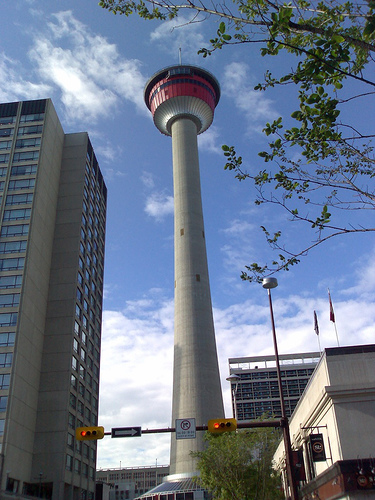Built to commemorate Olympics, World Fairs, to drive tourism or display a city or business’s astonishing skill in architecture and engineering, there are dozens of towers around the world. Canada has four towers across the country, appearing in the background of many a tourist photo, or as the perfect vantage point from which to take spectacular panoramas. How many towers in Canada have you seen from the top?

CN Tower – Toronto, Ontario
Standing at 1,815 feet, the CN Tower is a must see for visitors to Toronto. The tallest freestanding structure in the world from 1975 until 2008, it was built in 1976 by Canadian National, a company that wanted to demonstrate the strength of Canadian industry. In addition to the main level entertainment complex, the CN Tower is home to a revolving restaurant, four observation platforms and EdgeWalk – the world’s highest ‘hands-free’ walk (116 stories above ground. These can all be accessed by a ride on one of the six elevators with floor to ceiling glass panel fronts.
EdgeWalk is CN Tower’s most thrilling attraction in its history, and the first of its kind in North America. It is the world’s highest full circle hands-free walk on a 5 ft (1.5 m) wide ledge encircling the top of the Tower’s main pod, 356m/1168ft (116 storeys) above the ground. Visitors walk in groups of six, while attached to an overhead safety rail via a trolley and harness system. Trained EdgeWalk guides will encourage participants to push their personal limits, allowing them to lean back over Toronto with nothing but air and breathtaking views of Lake Ontario beneath them.
Fun fact: All major Broadcast, AM and FM Radio stations as well as wireless service providers use the CN Tower for transmission.

Skylon Tower
Niagara Falls, Ontario
Rising 775 feet above Niagara Falls, the Skylon Tower’s glass-enclosed elevators transport visitors to its Dome, which has three viewing levels and a revolving restaurant. Built in 1964, it’s still the tallest structure in Niagara, allowing visitors an incredible view of the Falls, the Great Gorge, Niagara wine district and the city skylines of Buffalo, New York and Toronto.
At ground level there’s shopping, glassblowing performances and a large indoor entertainment centre, complete with high-tech interactive games and rides for all ages.
Fun fact: The Skylon Tower features three signature Yellow Bug elevators, the first of their kind when construction began. Their ascent takes just 52 seconds.
Calgary Tower
Calgary, Alberta
Erected in 1968, the Calgary Tower was built by a continual pour of concrete using techniques that were novel at the time. Designed to withstand the elements, in high winds the 626 foot high tower can sway up to 16.5 centimetres.
The tallest structure in Calgary for decades, it’s recently been eclipsed by several office towers. Still, the view of Calgary and the Rocky Mountains is spectacular. The observation deck sits 525 feet above ground, and offers a full 360 degree panoramic views from the restaurants (one of which revolves) and observation levels.
In 2005, the tower opened a 36-foot wide glass floor that suspends visitors midair over the street below. Recently, the Tower was outfitted with 39 LED lights to enable it to feature daily light shows from 5 a.m. to sunrise and from dusk to midnight. The lighting is developed to celebrate national holidays, cheer on sports teams, support local festivals and raise awareness of important causes.
Fun fact: During the 1988 Winter Olympics, the city created the world’s tallest Olympic Torch using the tower for the Olympic flame.

© Parc olympique – Crédit photo Jean-François Hamelin
Montreal Tower
Montreal, Quebec
The smallest of Canada’s four towers, the Montreal Tower is a mere 574 feet tall, but built at a 45-degree angle. Constructed for the 1976 Olympics, the observation deck with skylights and floor to ceiling glass windows wasn’t finished until 1987. Ascending to the top in a glass-encased funicular that runs on a cable on the outside of the tower lets visitors reach the observation deck, with its incredible view of the Laurentian mountains.
Fun fact: The top of the tower has a mass of 8,000 tonnes, which is attached to the infrastructure and 145,000 tonnes of concrete base buried ten metres below ground level.





